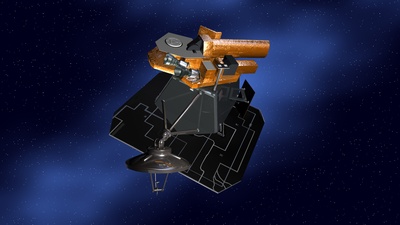NASAs Deep Impact Spacecraft Eyes the Future
"The burn was right on the money. Not bad for a spacecraft whose prime mission successfully concluded in 2005," said Tim Larson, Deep Impact project manager from NASA's Jet Propulsion Laboratory in Pasadena, Calif. "We've logged a lot of miles and at least one comet flyby since our '05 encounter with comet Tempel 1. With this burn, we keep the door open for Deep Impact logging even more miles and exploring more small worlds before all is said and done."
Last Thursday, Larson and his Deep Impact team watched from their mission support area at JPL as their spacecraft began the maneuver at 4 p.m. PST (7 p.m. EST). The spacecraft's two-minute, 20-second burn changed its velocity by 19.7 mph (8.8 meters per second). If NASA approves a third mission extension for Deep Impact, a second rocket burn will be executed next fall.
Launched in January 2005, Deep Impact traveled about 268 million miles (431 million kilometers) to the vicinity of comet Tempel 1. On July 3, 2005, the spacecraft deployed an impactor that was essentially "run over" by the nucleus of comet Tempel 1 on July 4. Sixteen days after comet encounter, the Deep Impact team placed the spacecraft on a trajectory to fly past Earth in late December 2007. This extended mission of the Deep Impact spacecraft culminated in the successful flyby of comet Hartley 2 on Nov. 4, 2010.
JPL, a division of the California Institute of Technology in Pasadena, manages the Deep Impact mission for NASA's Science Mission Directorate, Washington. The mission is part of the Discovery Program managed at NASA's Marshall Space Flight Center in Huntsville, Ala. The spacecraft was built for NASA by Ball Aerospace & Technologies Corp., Boulder, Colo.
For more information about Deep Impact, please visit: http://solarsystem.nasa.gov/deepimpact .
